► The Mk 8 Volkswagen Golf has been revamped
► New infotainment system a highlight
► Still plenty of engine choice
50th birthdays are a big deal in the car world. I’m of course not talking about those of the clever folks who build them, or market them, or review them for CAR online, but the cars themselves. Any model that stands the test of time for half a century must’ve got something right along the way, and the Volkswagen Golf family hatchback is an excellent case in point.
It turns 50 this year, and after more than 37 million sold it’s still the quintessential large hatch, but there’s no denying these are stormy days for the class. Many hatchbacks have been put out to pasture in favour of roomier crossovers recently, but we’re glad to report that a future for the Golf model and the name it wears has been confirmed by VW CEO Thomas Schäfer. Happy days.
Back to the latest version, though and inevitably VW wanted to celebrate the Golf’s golden birthday a few upgrades for the Mk 8 – we’ll call it the Golf 8.5. It’s available in a range of different trims, as a hatchback or an estate, with a diesel, petrol or hybrid engine, and with a manual or VW’s DSG automatic gearbox. It’s also available as a plug in hybrid, while a hotter GTI is on sale and an R version is on the way.
I’ve had the chance to jump into a fair spread of the Golf range, putting my subjects through their paces. To find out everything you need to know, read on for the full review from CAR.
At a glance
Pros: great manual gearbox, infotainment software much improved, variety of engines
Cons: Can feel a bit cheap inside, weaker engines lack punch, hatch tight on space
What’s new?
This is only a light update, but some of the amendments go a long way in improving the experience. The Golf now has improved infotainment software – based on its fourth-generation modular system – that’s sharper, faster and much easier to use than the old model (more on that later). It’ll be presented by either one of two infotainment displays on offer: a 10.4-inch model or a top of the range 12.9-inch screen.
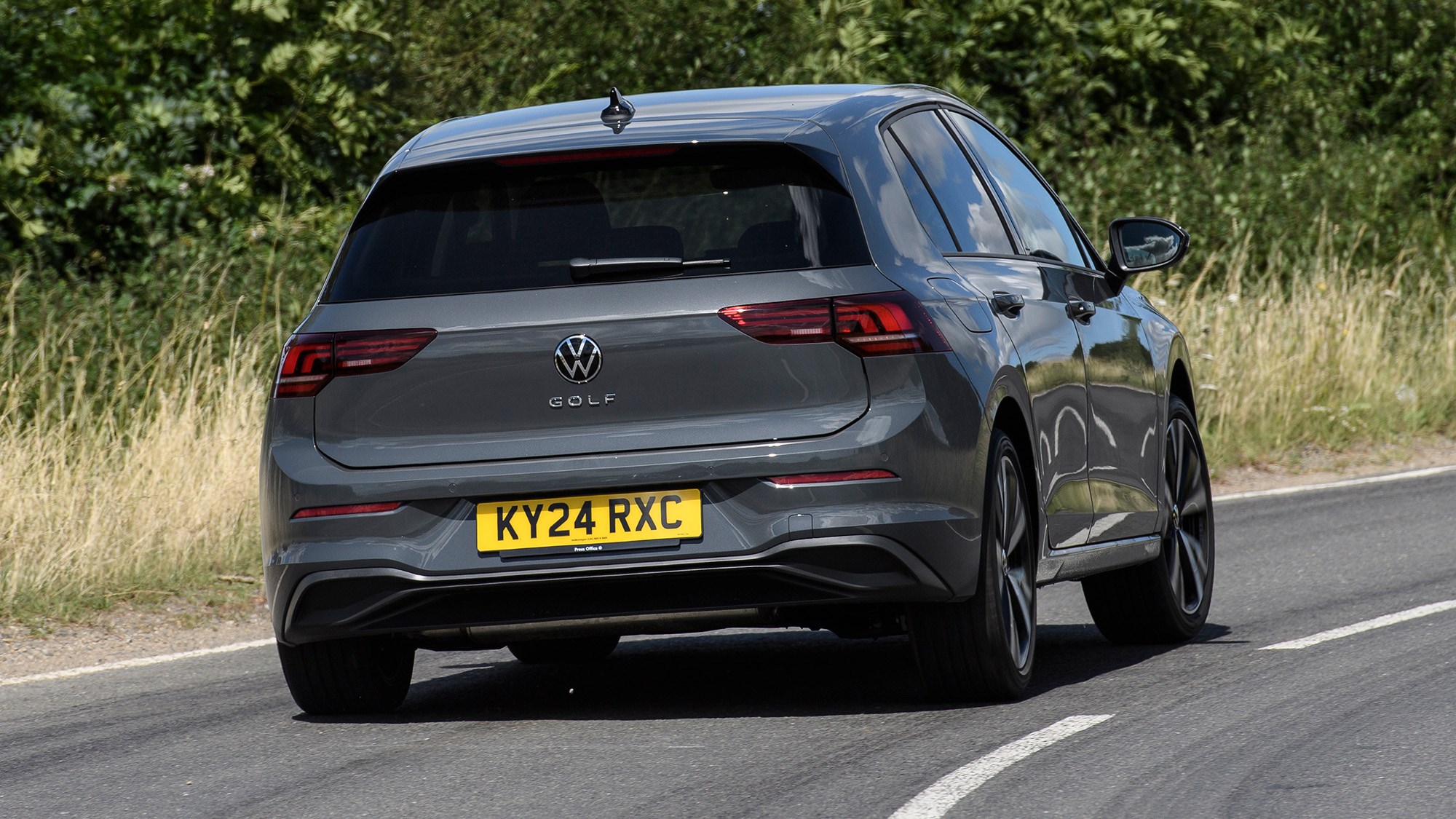
A few exterior tweaks are present and correct, including fresh headlight and taillight clusters and a redesigned front grille. The Golf also now has an illuminated Volkswagen badge on the front, so whichever badger or rabbit or muntjac you hit in the dark of night knows who its enemies are before being sent to the afterlife. A new parking-assist system called Park Assist Pro has been introduced, allowing owners to park their car via their smartphone while the standard equipment list on all cars as seen an upgrade.
What are the specs?
The 2024 Golf is offered in a range of different engines configurations, and so performance statistics can vary between models. See below for a breakdown of the engine line up.
1.5-litre TSI – two 1.5-litre petrol engines are on offer, producing 113bhp or 147bhp for 0-62mph times of 9.9 seconds and 8.6 seconds respectively, along with top speeds of 126mph and 139mph. According to figures quoted by WLTP Fuel economy is rated at 52.3 mpg and 50.4mpg for the two non-hybrid engines – the latter being for the more powerful of the two – while emissions are WLTP quoted at 123 g/km for the 113bhp version and 123 to 127 g/km for the 147bhp version.
eTSi engines are also available with 113bhp or 147bhp power outputs. The weaker option has the same acceleration speed as the non-hybrid model, but the 147bhp eTSI has a slightly quicker 0-62mph time of 8.4 seconds. They have the same top speeds as their non-hybrid counterparts, but their fuel economy and emissions figures are different. The 113bhp eTSI produces 120 g/km with a fuel economy figure of 53.3 mpg, while the 14bhp eTSI produces 119 to 122 g/km and 53mpg.
2.0-litre TDI – The diesel option can also be configured to produce either 113bhp or 147bhp. These engines have a 0-62mph time of 10.2 seconds and eight seconds respectively, along with respective top speeds of 125mph and 138mph. The 113bhp TDI engine produces 117g/km and has an economy figure of 62.8mpg, while the 147bhp option produces 123 g/km and 60.1mpg. All are quoted by WLTP.
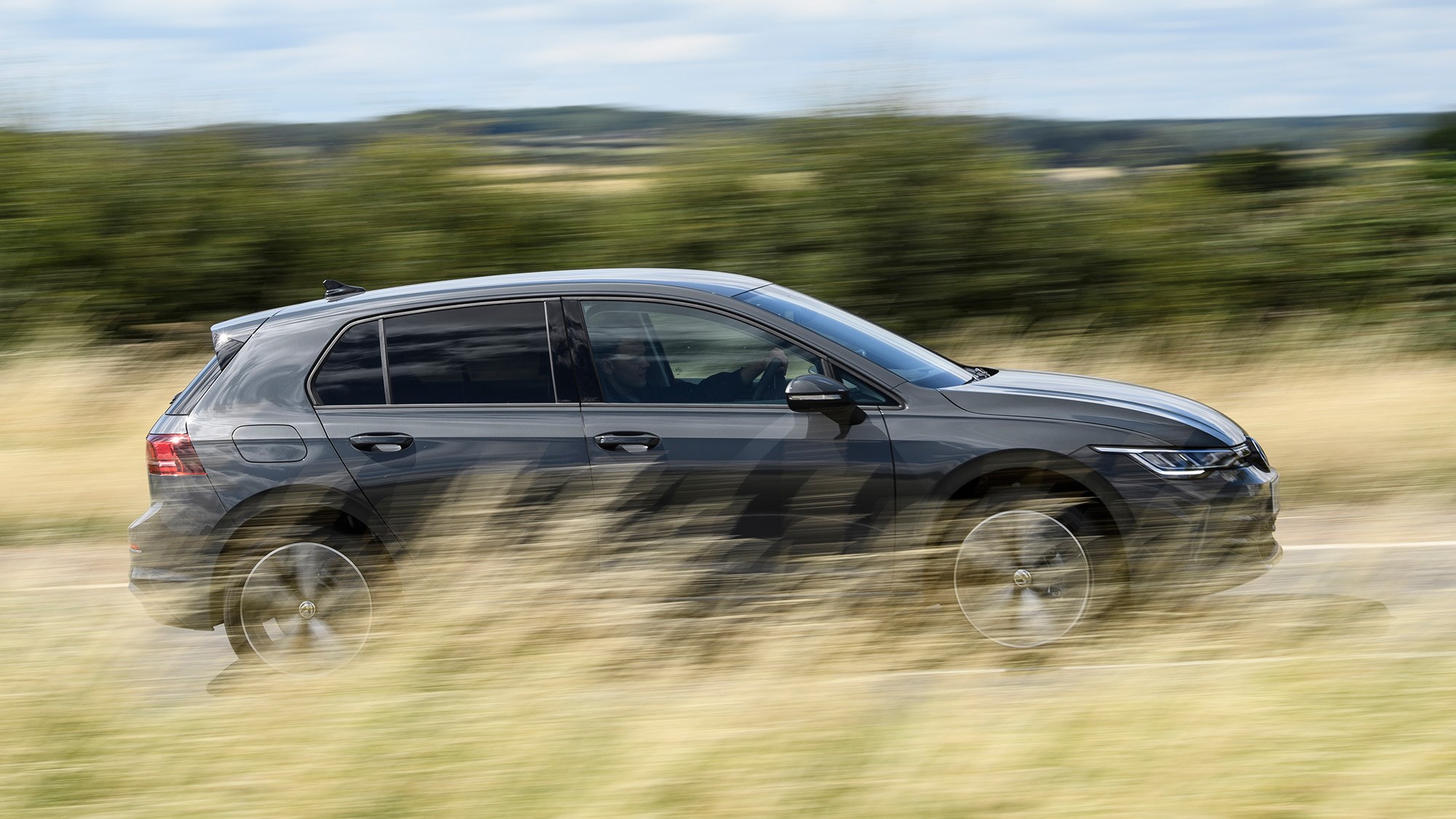
1.5-litre TSI PHEV – Two plug in hybrid options are also available, with 201bhp or 269bhp on offer. These have respective 0-62mph times of 7.2 seconds and 6.6 seconds, along with top speeds of 137mph and 143mph. According to WLTP numbers, they have the potential to produce 6 g/km or 8g/km of CO2 respectively, with potential consumption figures of 941.6mpg or 706.2mpg. VW also says that the PHEVs should be able to achieve between 82 and 88 miles of pure electric range.
2.0-litre TSI – a two-litre TSI variant is also available. It produces 201bhp and can reach 62mph from 0 in 5.9 seconds.
How does it drive?
The Golf hatchback is a wholly inoffensive car to drive, which is probably why it still exists after 50 years. The more pedestrian Golf models won’t blow your socks off in terms of raw speed, acceleration or handling, but all Golf’s can still carry out the fundamental necessities of a family hatchback brilliantly.
They’re comfortable, refined and roomy for a hatchback, but for me, the real stand out virtue is the manual gearbox. It has a delectably slick and notchy action, making it a real joy to use. The first couple of gear are quite short, and so you’re up into third in what feels like a flash, but it’s still a highly useable ‘box and feels perfect for the type of car it’s in. I didn’t get the chance to test a new Golf with the DSG automatic gearbox fitted, but from my experience of the same transmission in other models, it’s still a solid choice if you’d rather have less to do.
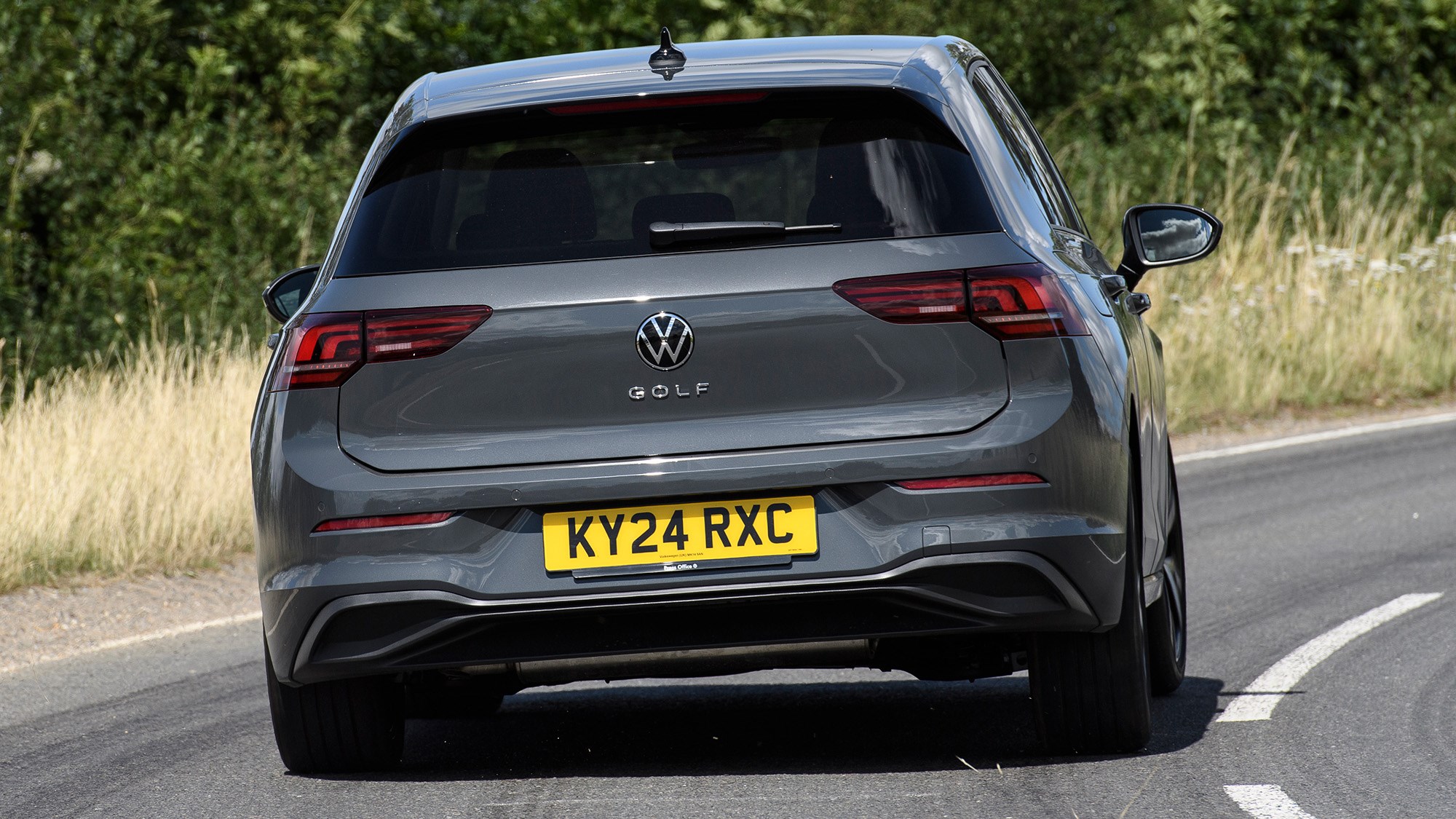
The amount of poke you get from both the TDI and TFSI engines also feels suitable for a family hatchback. At no point during my test did I feel as though power fell short of what I needed to pull onto a motorway or make it up a steep incline. But if you’re after a model that than can transform into a performance rocket whenever you’re feeling your oats, I’d steer clear of the basic engine options, as they simply don’t have the guts to thrill you.
This lack of energy is somewhat compounded by the ride, too. It’s compliant and comfortable, but any go kart feel you might’ve experienced in a Mini or smaller Suzuki Swift is missing. I sensed the Golf is quite a heavy car during my test, and not one that enticed me to drive quickly at all. As previously mentioned, hotter GTI and R versions are on the way, so there should be plenty of time for that.
What’s it like inside?
The interior of the Golf 8.5 is largely the same as the Mk8, save for a few tweaks and some new materials. The car I tested had a cabin that felt primed for family life, with plenty of hard – though not necessarily always harsh – plastic surfaces and robust fabrics. Depending on which trim level you opt for, the dash is split by a metallic strip, which serves well to break up the materials and introduce a more upmarket touch.
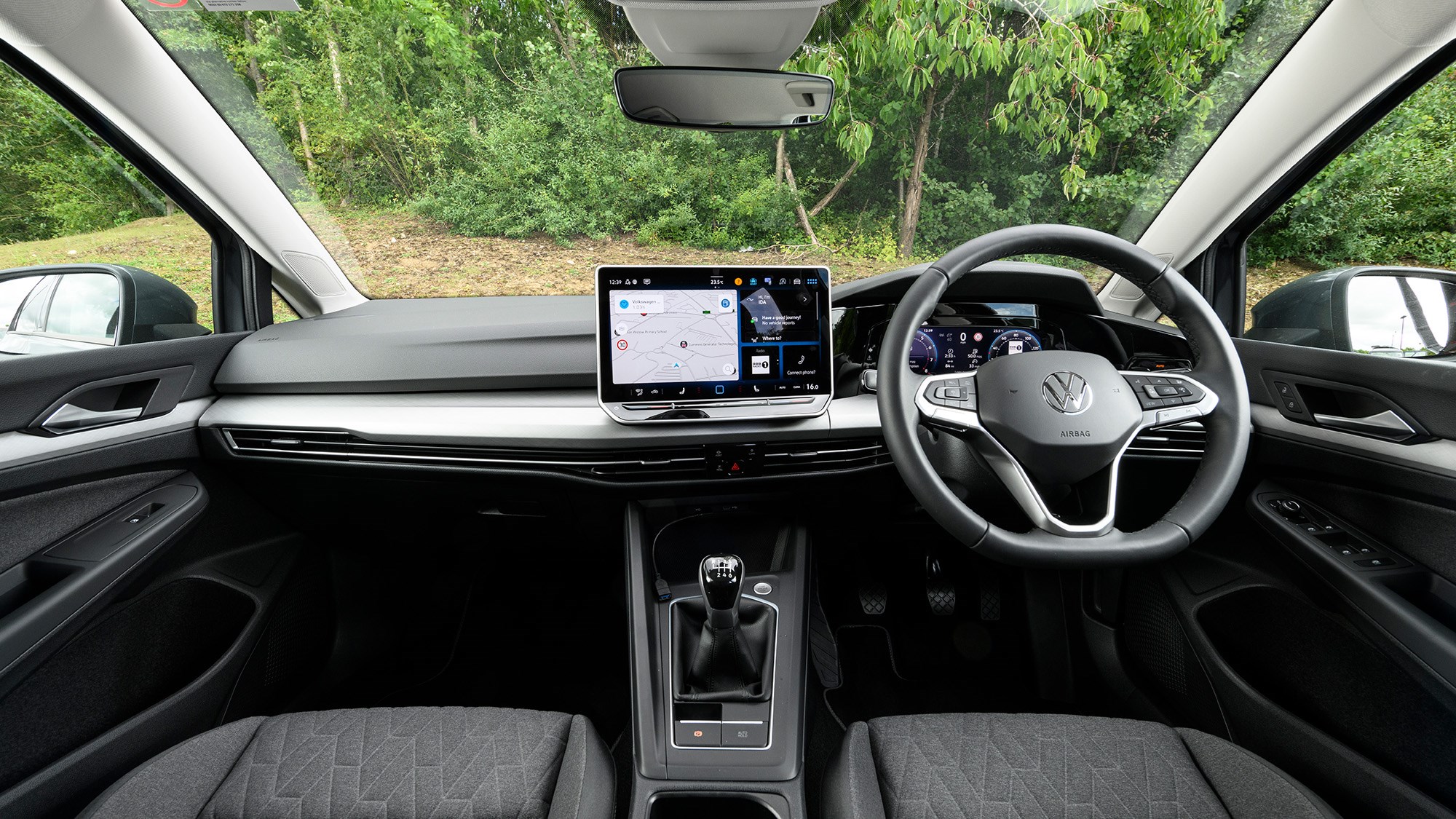
Otherwise, it feels like a functional environment that’s devoid of much imagination. I found the seats comfortable enough, though the synthetic fabric finish isn’t very pleasant to the touch. Again, the fabric seems primed to resist unforeseen spillages – we’ll call it that, rather than just plain tacky.
It’s in the infotainment where Volkswagen has taken the biggest leap forward, though. The 2024 Golf benefits from an all-new software platform called MIB4. I’m happy to report that it’s considerably faster, sharper and easier to use than the last system. The one that, in all honesty, let the experience down a bit.
Both displays are high quality, but I found the larger, optional 12.9-inch example easier to navigate through while on the move. Navigation through the menus is also made simpler by new shortcut buttons, including a new access button on the far left to open up the main menu, and a large home screen button to name two.
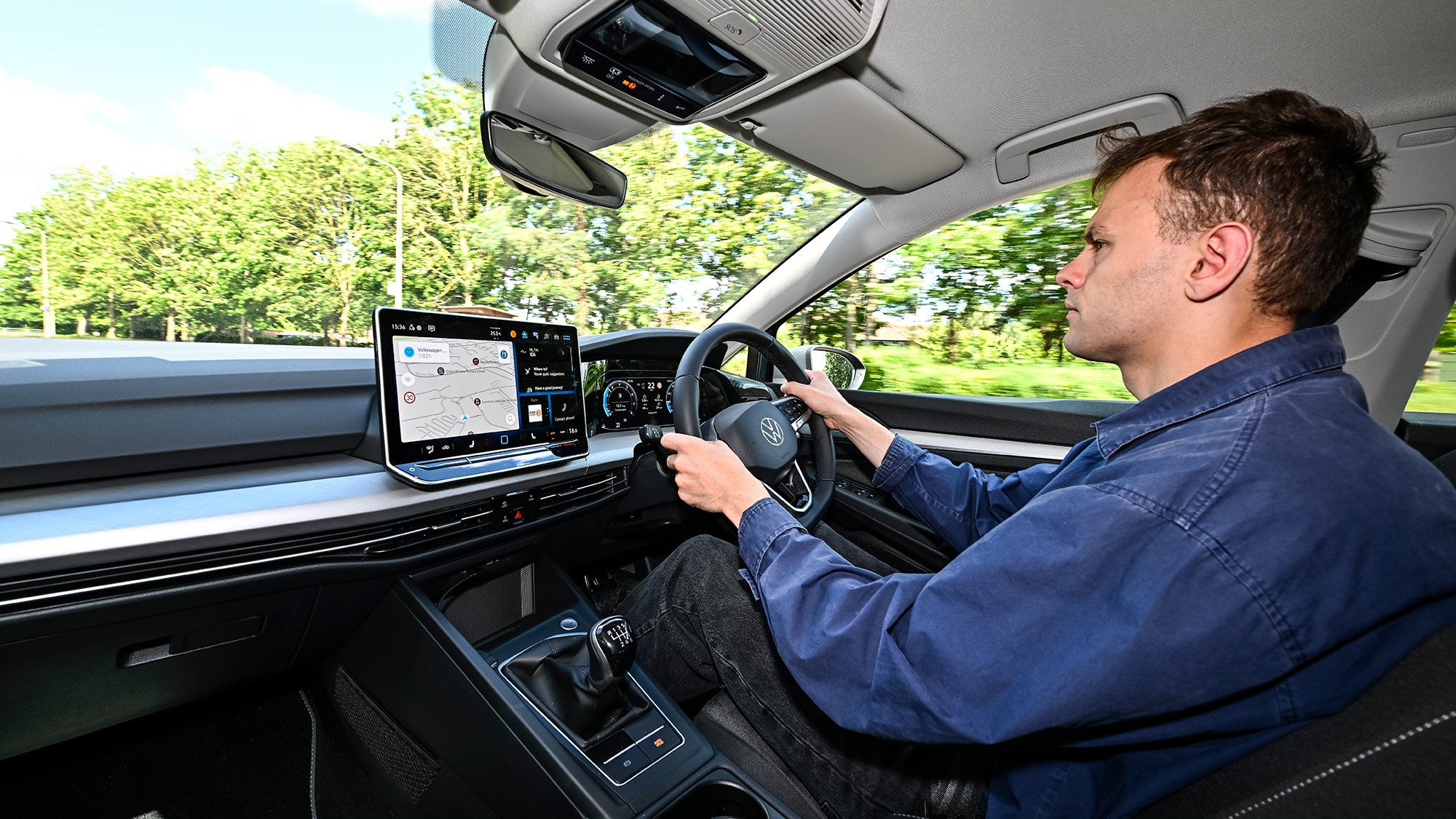
The latest Golf’s infotainment display is supported by VW’s IDA voice assistant software, in conjunction with the ai platform Chat GPT, baked into the system. Working together, they allow for hands-free control over much of the car’s functions, and it’s a doddle to use. Just try not to spend every journey needlessly ordering your car to do random things like some mad ai overlord. As Nero or Stalin would probably attest, the feeling of omnipotent power can become hollow if you abuse it for too long…
Before you buy
The Golf hatchback is currently offered in five different trim levels, staring with ‘Life’ trim for £27,035. For this, you get a generous amount of equipment, including a 12.9-inch infotainment display, exterior ambient lighting, comfort front seats and many more extras. For slightly more money (£27,100), the Golf ‘Match’ introduces 17” alloys (Life Golfs get 16 inchers), a rear view camera and a tinted back windows.
Next up in the range are the Style and R-Line trims – the latter has a healthy festooning of sporty R details around the cabin, if that’s your thing – before topping out with the Black Edition for £31,285. These cars have 18” alloys, along with uprated lights and heated front seats. For a bit more money, a GTE hybrid model is available for just under £40k, while the GTI with its 2.0-litre engine, honeycomb intake structures and 18-inch wheels, will set you back £38,900.
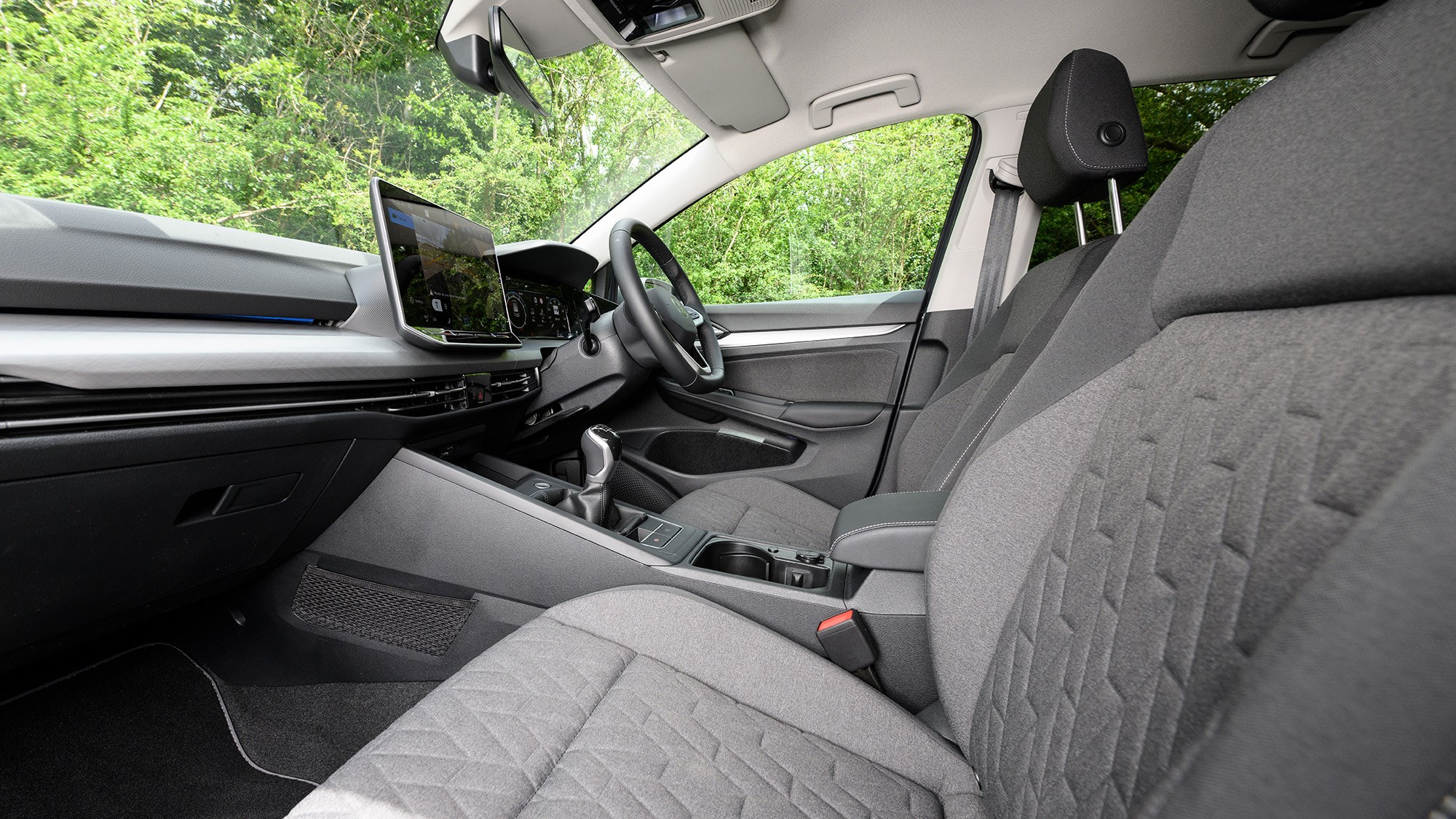
Does the latest Golf feel worth the money? Yes – just. The infotainment system, driving characteristics and gearbox have the feel of the premium car, but it’s an illusion somewhat burst by a few cheap-feeling materials around the cabin. I sensed it was a better car than a SEAT Leon or Vauxhall Astra, but still falls short of the Audi A3 or BMW 1 Series on cabin quality.
Verdict
So, we’ve got a new Golf, and it’s a bit better than the last one. Sounds like a familiar round-up line after fifty years, but the fact of the matter is VW’s family hatchback remains a front-running contender in the family hatchback pack. It’s economical, easy to drive, brimmed with tech and now the infotainment system is improved, easy to navigate through, too. If you value practicality and sturdiness to contend with the perils of family life, it still might be the one to beat.
VW Golf review: our sister website CarZing reports